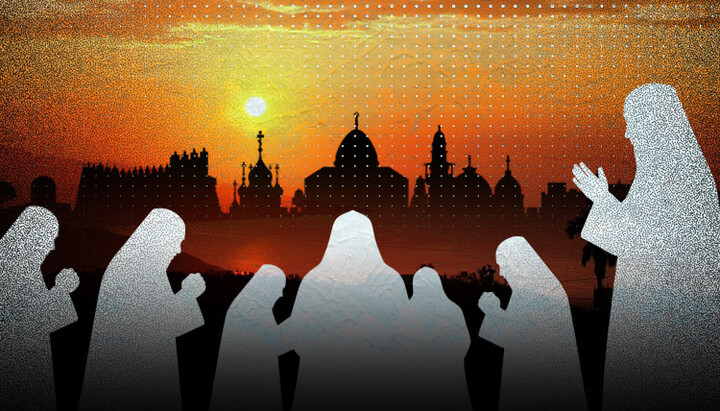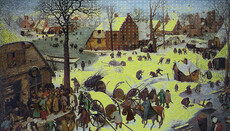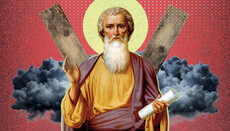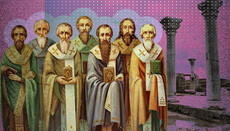"My spirit keeps vigil for you": How Matins was born and why we pray at dawn

Pliny reported that Christians sing "at dawn". How did the monks’ nighttime vigils and the traditions of Jerusalem give rise to the Church’s most complex service?
We continue our series of discussions on the liturgy and move on to the most extensive and, perhaps, the most complex of the daily services – Matins. Modern practice recognizes three types depending on the degree of festivity – daily, doxological, and polyeleos. But before studying their structure, it is worth turning to the origins of the formation of Matins in the ancient Church.
Biblical origin
The Old Testament provides numerous testimonies of how the prophets offered prayers precisely at dawn. The Psalmist says: "O God, thou art my God; early will I seek thee (that is, I call upon Thee in the morning)", the prophet Isaiah: "My spirit within me keeps vigil for you."
Morning was perceived by biblical righteous ones as a time of thanksgiving and renewal of the covenant with God.
Therefore, it is natural that the apostles, inheriting the living tradition, adopted the customary rhythm of morning prayers. The first generations of their disciples did the same.
This practice became so widespread that it was known even to pagans. Proconsul Pliny writes to Emperor Trajan about the Christians of Bithynia, that "they gathered together before sunrise and sang hymns to Christ".
Researchers believe that such morning doxologies included psalms corresponding in content (for example, 4, 62, 87, and others) and biblical Old Testament songs of the prophets, as well as the hymn "Glory to God in the highest".
Monastic vigil
The next stage in the formation of Matins is connected with the flourishing of monasticism. Having withdrawn from the world, ascetics sought unceasing prayer, and the night became a time of special spiritual endeavor for them. In the silence of the night, free from hustle and bustle, monks engaged in contemplation and psalmody.
It was in the monastic environment that the tradition of holding "vigils" – prayer gatherings lasting a significant part of the night – was born.
The Psalter was read in full or in large parts, interspersed with readings from the Holy Scriptures and reflections. Monastic Matins was not as strictly tied to dawn as the parish Matins and had a penitential, ascetic character.
The foundation was the expectation of the Second Coming of Christ, which, according to tradition, should occur at night, similar to how the Bridegroom in the parable comes at midnight.
Jerusalem Matins
The tradition of the Jerusalem Church had a tremendous influence on the order of Matins. Thanks to the notes of the pilgrim Egeria (4th century), we know how the service was conducted at the Holy Sepulchre.
It was distinguished by special solemnity and connection with sacred topography. Matins began in the dark and ended with the sunrise. A characteristic feature was the singing of psalms with refrains (antiphons) and the reading of the Gospel dedicated to the Resurrection of Christ.
Another feature of the ancient Jerusalem practice was the arrival of the bishop in the temple during the ongoing service. Since the Church of the Resurrection was constantly filled with pilgrims, the bishop could not always start the service himself – his arrival became part of the liturgical action. Later, this gave rise to the small entrance, which was once performed at Matins just as it is now performed at Vespers.
Many features of the Jerusalem Matins became part of the service we know today.
For example, the Gospel, read in the middle of the service, the singing of biblical songs, "the blameless", the praise psalms, "the great doxology" were already known in Palestine at that time. Some of them are mentioned by the Holy Fathers (Venerable Cassian, Saint Athanasius the Great, and others) and are recommended not only for church but also for home prayer.
Ancient canvas, new pattern
Having undergone centuries of development, Matins gradually acquired the shape we know today. Some elements have reached us almost unchanged, while others, on the contrary, have evolved, become more complex, and transformed into new forms, taking their place in the order.
The harmonious, rational, and complex structure of modern Matins is the fruit of this development.
Despite the diversity of today's liturgical "pattern" – the abundance of colors, lines, and interweavings – the "canvas" on which it is woven remains the same as in antiquity. At the heart of all the beauty and richness of modern orders remains the expectation of light, permeated with repentance and hope for a meeting with the Risen Christ.












